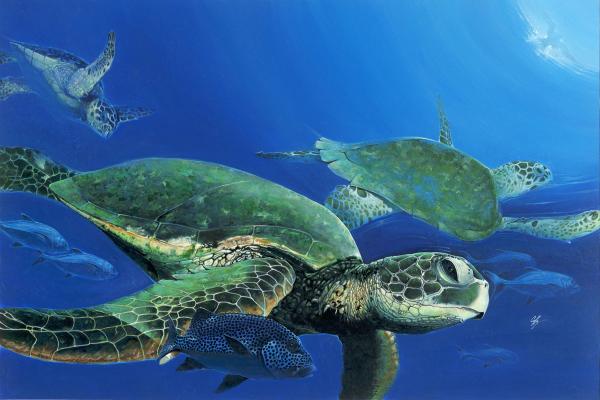The Green sea turtle or green turtle is a large sea turtle. It is the only species in the genus Chelonia. Its range extends throughout tropical and subtropical seas around the world, with two distinct populations in the Atlantic and Pacific Oceans. The green sea turtle is a sea turtle, possessing a dorsoventrally flattened body covered by a large, teardrop-shaped carapace and a pair of large, paddle-like flippers. It is usually lightly colored, although parts of the carapace can be almost black in the eastern Pacific. It is mostly herbivorous. The adults commonly inhabit shallow lagoons, feeding mostly on various species of seagrasses. Like other sea turtles, they migrate long distances between feeding grounds and hatching beaches. Many islands worldwide are known as Turtle Island due to green sea turtles nesting on their beaches. Females crawl out on beaches, dig nests and lay eggs during the night. Later, hatchlings emerge and walk into the water. Those that reach maturity may live to age 80 in the wild. It is illegal to collect, harm or kill them. In addition, many countries have laws and ordinances to protect nesting areas. However, turtles are still in danger because of several human practices. In some countries, turtles and their eggs are hunted for food. Pollution indirectly harms turtles at both population and individual scales. Many turtles die caught in fishing nets.
Image of green sea turtle with colorful fish





No comments:
Post a Comment